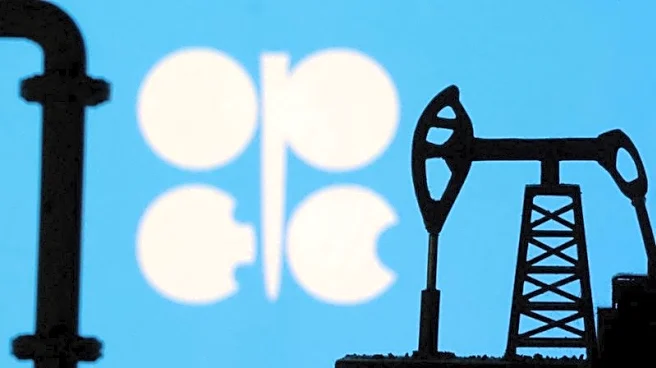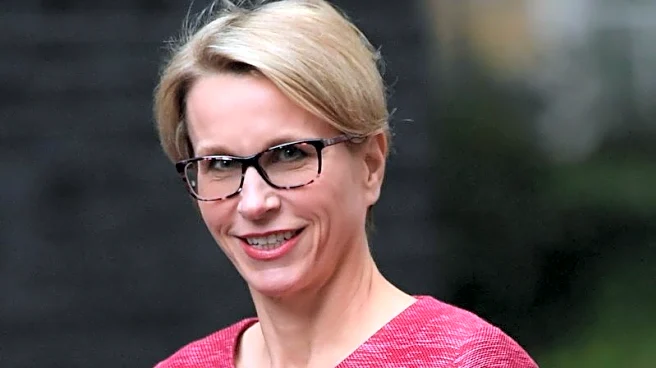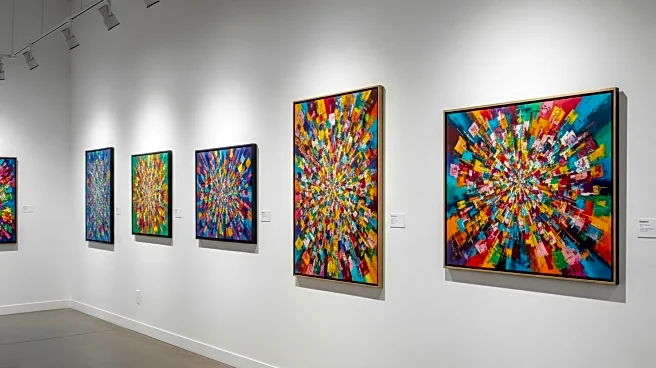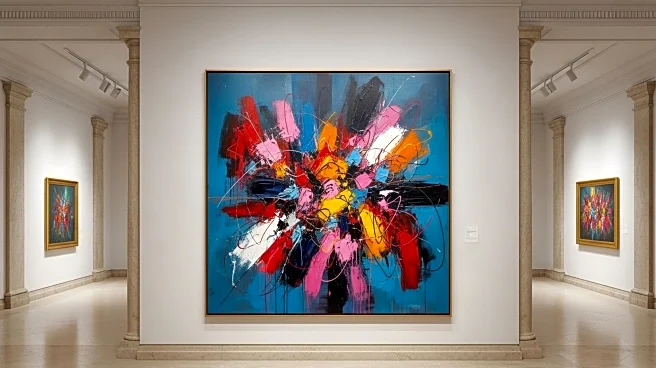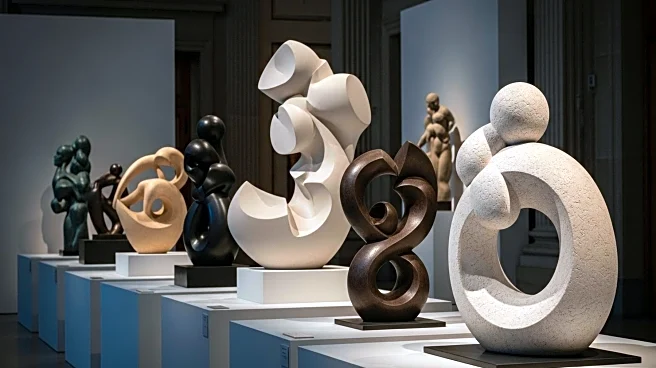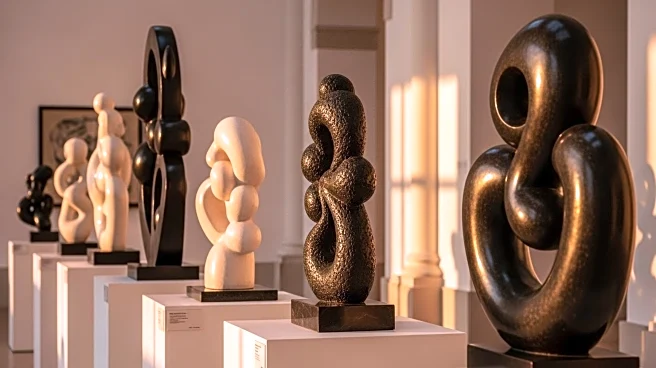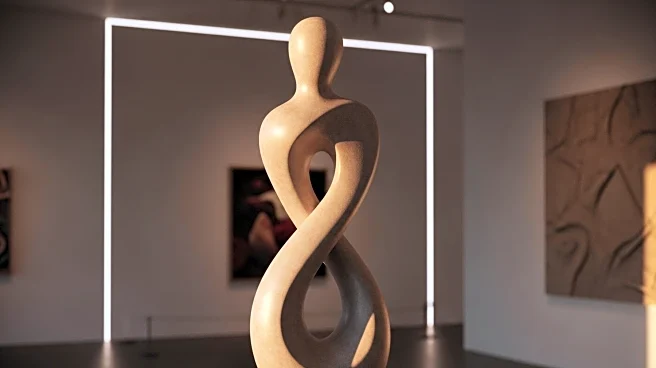What's Happening?
Artist Tanoa Sasraku is showcasing her collection of paperweights produced by oil companies in her upcoming solo exhibition, Morale Patch, at the ICA in London. These paperweights, which contain a drop of crude oil, serve as a metaphor for the seductive allure and fragility of power and wealth derived from oil extraction. Sasraku's work interrogates the role of oil in geopolitics and national identity, using these objects to map worldwide oil production and conflict. Her exhibition also includes custom-made paperweights and wall-based works that allude to flags, reflecting on the political games played by leaders. Sasraku's fascination with 1980s Americana and its influence on current geopolitics is evident in her art, as she explores themes of ambition, greed, and masculinity.
Why It's Important?
Sasraku's exhibition highlights the complex relationship between oil production and global politics, emphasizing the fragility of power structures built on natural resources. By using art to critique the oil industry's influence, Sasraku invites viewers to reconsider the geopolitical alliances and conflicts driven by resource extraction. Her work underscores the ethical and environmental implications of oil dependency, prompting discussions on sustainability and the need for alternative energy sources. The exhibition also reflects on cultural influences, particularly the impact of American media and consumerism on global perceptions of power and success.
What's Next?
The exhibition at the ICA in London will provide a platform for further dialogue on the role of oil in shaping international relations and national identities. As viewers engage with Sasraku's art, there may be increased awareness and critique of the oil industry's practices and their broader implications. The exhibition could inspire other artists and activists to explore similar themes, potentially influencing public opinion and policy discussions on energy and environmental issues.
Beyond the Headlines
Sasraku's work delves into the cultural dimensions of American influence, examining how media and consumerism have shaped perceptions of power and identity. Her art challenges viewers to reflect on the ethical implications of resource-driven geopolitics and the cultural narratives that support them. By juxtaposing symbols of American ambition with the realities of oil dependency, Sasraku's exhibition offers a nuanced critique of the dominant cultural narratives that have defined global politics.

